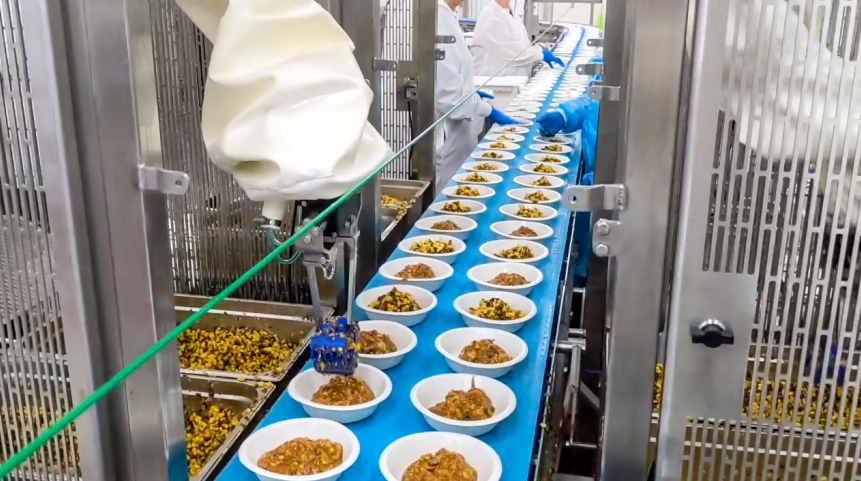"Informed AI News" is an publications aggregation platform, ensuring you only gain the most valuable information, to eliminate information asymmetry and break through the limits of information cocoons. Find out more >>
AI Robotics in Food Processing: Efficiency and Precision
- summary
- score

Chef Robotics, a startup in San Francisco, has developed an AI-powered robotic arm system that can be programmed with recipes to accurately measure ingredients and sauces. Following successful trials with brands like Amy's Kitchen, the company is expanding its deployment.
Previously, robots struggled with the variability in food processing, where human hands were more adaptable, especially in tasks like rice or cheese shredding. However, advancements in AI have enhanced robot capabilities, enabling them to distinguish between tasks such as scooping peas and cauliflower, thereby improving their accuracy over time.
Chef Robotics does not sell its robots outright; instead, they offer a service model where clients pay an annual fee for system maintenance and training. Amy's Kitchen utilizes eight systems, each equipped with dual arms, across two factories. These robots can replace two to four human workers, depending on the task, and also reduce waste by dispensing ingredients more precisely than humans.
The CEO of Chef Robotics, Rajat Bhageria, estimates the annual cost of a single-arm system at under $135,000. This investment is justified by the efficiency and cost savings in labor and materials.
Lerrel Pinto, from NYU's Robotics and AI lab, notes that more versatile robots are likely to be adopted across new industries, highlighting the shift towards more general-purpose robots driven by advancements in deep learning.
For Amy's Kitchen, the challenge now is to ensure that robot-packed foods maintain the aesthetic of hand-packed items. They are continuously training the robots to handle a wider variety of foods, aiming to increase their role in packaging frozen meals.
| Scores | Value | Explanation |
|---|---|---|
| Objectivity | 6 | Balanced reporting with comprehensive analysis. |
| Social Impact | 4 | Influences public opinion on AI in food industry. |
| Credibility | 5 | Solid evidence from authoritative sources. |
| Potential | 5 | High potential to trigger industry changes. |
| Practicality | 5 | Extremely practical, widely applied. |
| Entertainment Value | 3 | Somewhat entertaining, industry-focused. |